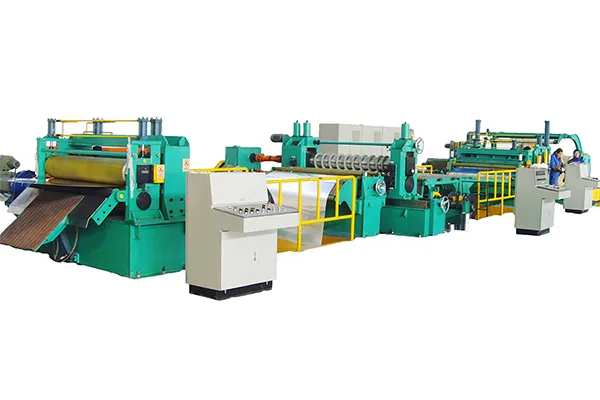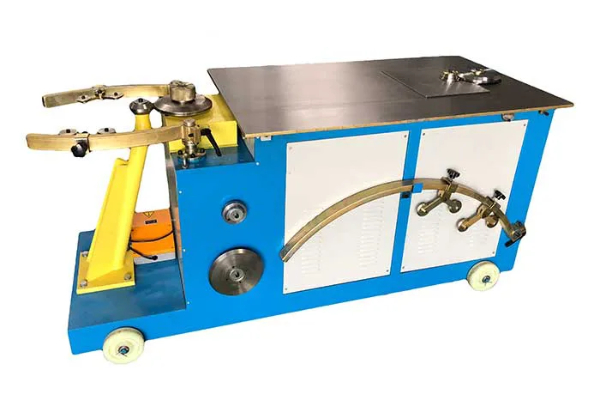
Choosing Between Semi-Automatic and Fully Automatic Duct Fabrication Machines
- By:Metmac
- 2024-06-24
- 150
Duct fabrication is a crucial process in the construction of HVAC systems and industrial applications. Selecting the right duct fabrication machine is essential to optimize production efficiency, accuracy, and cost-effectiveness. This article delves into the key considerations when choosing between semi-automatic and fully automatic duct fabrication machines.
Factors to Consider
1. Production Volume and Complexity:
The production volume and complexity of duct designs determine the level of automation required. Low-volume production with simple designs may be suitable for semi-automatic machines, while high-volume production with intricate designs necessitate fully automatic machines for enhanced efficiency.
2. Labor Costs and Skill Level:
Fully automatic machines minimize the need for skilled labor, reducing operating costs in regions with high labor expenses. However, semi-automatic machines require more operators, making them more cost-effective in areas with low labor costs and skilled operators.
3. Accuracy and Consistency:
Fully automatic machines offer higher accuracy and consistency in duct fabrication, reducing the risk of human error. They ensure precise measurements and consistent quality, particularly for complex duct shapes. Semi-automatic machines may be suitable for less demanding applications.
4. Flexibility and Versatility:
Semi-automatic machines provide more flexibility and versatility in handling different duct materials and design changes. They allow for quick adjustments and manual interventions to accommodate project requirements. Fully automatic machines, while efficient for high-volume production, may be less adaptable to changes.
5. Space Requirements and Setup Time:
Fully automatic machines typically require more space due to their larger footprint and peripheral equipment. Setup and configuration can be time-consuming. Semi-automatic machines are compact and easier to set up, making them suitable for smaller workshops or frequent job site changes.
6. Investment Costs and Return on Investment:
Capital investment is a significant factor to consider. Fully automatic machines are more expensive than semi-automatic machines. However, they can provide a faster return on investment for high-volume production and labor savings. Semi-automatic machines offer a lower initial investment but may have a longer payback period.
Conclusion
Choosing between semi-automatic and fully automatic duct fabrication machines requires careful consideration of the production volume, complexity, labor costs, accuracy requirements, flexibility, space constraints, and investment costs. By evaluating these factors, manufacturers can make an informed decision that aligns with their specific needs and production goals.
-
Sheet Metal Rolling Machine for Sale: Finding Precision and Durability with METMAC
2025/12/09 -
Press Brake Bending Machine: Engineering Precision with METMAC
2025/12/09 -
CNC Sheet Bending Machine: Precision Redefined with METMAC
2025/12/09 -
Sheet Metal Roll Forming Machines: The Precision of METMAC Engineering
2025/12/09
-
Advanced Sheet Metal Rolling, Laser Cutting, and Folding Machines for Precision Fabrication
2025/10/31 -
High-Performance Sheet Metal Bending and Cutting Machines for Modern Fabrication
2025/10/31 -
High-Quality Sheet Metal Equipment for Sale: Efficient Solutions for Modern Manufacturing
2025/10/31 -
High-Performance Sheet Metal Equipment for Sale: Forming and Shearing Solutions for Modern Fabrication
2025/10/22
-
A Guide to the Latest Innovations in Sheet Metal Folding Machines
2024/11/29 -
Key Features to Consider When Investing in a Sheet Metal Folding Machine
2024/11/28 -
Enhancing Precision with Advanced Sheet Metal Folding Machines
2024/11/27 -
How to Choose the Right Sheet Metal Folding Machine for Your Workshop
2024/11/26







